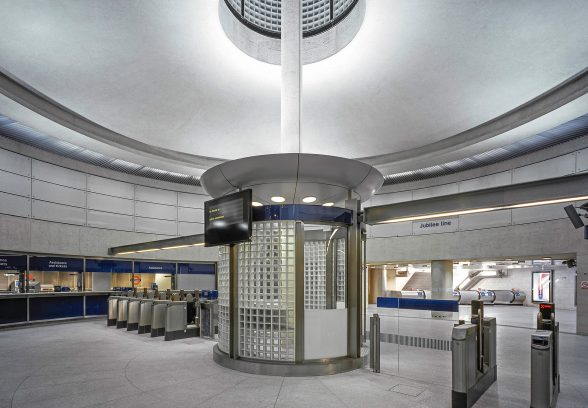This website uses cookies
This website uses cookies to enable it to function properly and to analyse how the website is used. Please click 'Close' to accept and continue using the website.



The Twentieth Century Society is launching a campaign to save the award winning Southwark Tube Station from the threat of partial demolition as proposals emerge to build a 30-storey housing development on the site.
We are submitting a formal challenge to the Department of Digital, Culture, Media and Sport’s decision to turn down our application to have the tube station listed. The DCMS’s decision was made on the advice of Historic England, whose report did not recommend the building for listing despite describing the station in its entirety as ‘exceptional.’ The top-lit ticket hall, lobby and escalator banks leading to the lower concourses are under threat due to plans for the construction of 300 flats.
The station was designed to carry an 11 storey building over the ticket hall, but planning approvals were never built and have since expired. The larger development proposed now would be too heavy for the existing structure.
Southwark was designed by the architects MacCormac Jamieson Pritchard (MJP) as part of the Jubilee Line Extension of the late 1990s, and is one part of a public sector infrastructure project that is now recognised as being the finest late c20 development of its kind in Europe.
The genius of the design is most evident below ground. The architects’ stated objective for the station was to ‘create a kind of topographical architecture—a subterranean landscape consisting of alternating experiences of confinement and spatial expansion amplified by contrasting experiences of natural and artificial light.’ In this MJP succeeded sublimely. Southwark is redolent with historic architectural references in its design detail, and contains a large piece of glass art work, a collaboration of the architects with the artist Alexander Beleschenko and structural engineers YRM/Anthony Hunt, combining art, architecture, engineering, computer-aided design and manufacturing technology to stunning effect.
The extension stations are part of a coherent ensemble; each designed by a different firm but linked through shared materials and ethos.
The decision not to list was made on the basis that the parts of the station under threat were not considered individually to be of Grade II* quality. Buildings of less than 30 years old generally cannot qualify for listing at a lower grade.
Conservation Adviser Tess Pinto said: “We strongly disagree with the judgement that the ticket hall itself is not of a high enough calibre to warrant listing, but our major concern is to do with the way the decision was reached. If a building is under threat, it should be assessed as a whole and that does not appear to have been done here – despite the fact the listing report explicitly states the station is a coherent and unified work of architecture. The Society is seeking professional legal advice and will be submitting a formal challenge in early August.”
For press enquiries:
Tess Pinto, Conservation Advisor, Twentieth Century Society
tess@c20society.org.uk
020 7250 3857

Become a C20 member today and help save our modern design heritage.